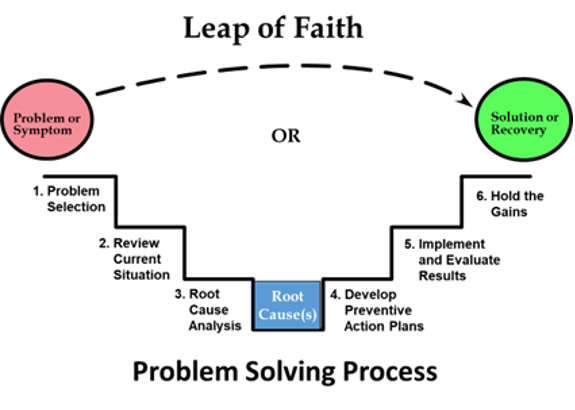Look beyond the obvious
In the same way that a Band-Aid merely covers up a wound but doesn’t heal it, treating just the symptoms of yourcompany’s performance issues won’t make them go away. Problems occur in every business, regardless of size or industry, that impact the overall level of performance throughout the company.
If you’re finding that you spend time putting out fires on a weekly or even daily basis, coming up with quick fixes, guessing what’s wrong and then moving on until the same issue arises again, it’s time to make a change.
To improve performance, it’s necessary to get to the underlying causes of the problems instead of dealing constantly withissues or reducing efficiency with workarounds that waste time. Unless you get to the root of the issues, and take preventive actions, they will continue to resurface.
When we work with companies facing chronic performance issues, we assist them in implementing a highly-effective,problem-solving process that addresses the problems head on and eliminates them at the root. It really comes down to the difference between being reactive and proactive.
Here’s a quick overview of the process:
Step 1: Problem Selection
The first step is to identify a critical problem that your company is facing. Find a priority project that will make a significant impact on your performance if solved. Using customer feedback and your company’s performance data, select the key problem or process that is continuously arising. Are deadlines consistently being missed? Are shipments going out late? Are we constantly correcting/ reworking documentation errors? Whatever issue occurs repeatedly should be addressed.
Have your team document the issues they are experiencing. Coupled with customer feedback and performance scorecards,you’ll have a powerful tool that can help you identify key problems.
Step 2: Review Current Situation
Getting your team together to discuss their current state process, performance metrics, customer interactions and whatfrustrations are interfering with performance is a key step to eliminating the problem at its core. Many times, those on the front lines of an organization can see things that are occurring that management is not exposed to on a daily basis. Brainstorming together can help you determine why problems exist and discover the root cause.
Step 3: Root Cause Analysis
Once you’ve gathered up enough information to get a clear view of where and when performance issues are occurring, you can then begin the process of analyzing what is causing the problems. Working together the team uses data to sort, stratify and verify root causes. When you get to
this step in the problem solving process, it’s important to remember that there may be several factors that are interrelated to cause the issue.
Step 4: Develop Preventive Action Plans
Now that you’ve worked together to analyze all the data and discovered certain root causes, you can then come up with an action plan to eliminate the issues you’ve identified. Rarely is there only one single solution that will work. Think of your possible solutions as a smorgasbord, where you have multiple options to choice from. Produce as many solutions aspossible. You’re not evaluating whether they’re good or bad right now. You are not judging or eliminating anything. You arejust thinking of any and everything that can help.
Encourage your team to challenge the rules and assumptions they have. Look at it from someone else’s perspective. Even awild, totally out there, impossible idea can lead to a related idea that turns out to be the ideal solution.
The plan should be a well-defined approach that is created using all the information gathered thus far and from team recommendations. For example, if there was a communication problem that caused deadlines to be missed, implementing anew assignment alert or assigning projects a week earlier may be an effective part of the action plan.
Step 5: Implement and Evaluate Results
Implementation does not occur when we send out a memo or hold a meeting. It occurs when there is a change at the level work occurs. Basic change management procedures will be extremely helpful during this process:
- Have a plan for how you’ll communicate the new process
- Train the leaders who will support and enforce the new process
- Identify and train everyone who works in the area of change
As you implement your new process, you should conduct daily follow-up to observe and collect data on how the newprocess is working. Issues should be documented and addressed systematically. The original project team should monitor everything and be prepared to address issues as they rise almost immediately. Data should also be reviewed systematically to ensure that appropriate collection procedures are being followed. Being able to monitor your plan is key because withoutthis step, you aren’t able to determine if you correctly diagnosed the root cause of the problem.
Step 6: Hold the gains
Now that you’ve implemented the new process and seen the performance gains, it’s time to make sure you can sustain your progress well into the future. So in this step you will need to:
- Standardize and document the process
- Ensure that all employees are trained and that training materials are prepared for new hires
- Create a plan to monitor the process
- React to any problems that may arise
- Recognition
And of course, you’ll want to keep everyone aware of your positive results and set up a schedule where you reevaluate the process to continually improve performance, efficiency, and profitability!
The Dorsey Group can help unleash your team’s potential and power peak performance. For more information, contact us at www.TheDorseyGroup.org or (954) 629-5774.

